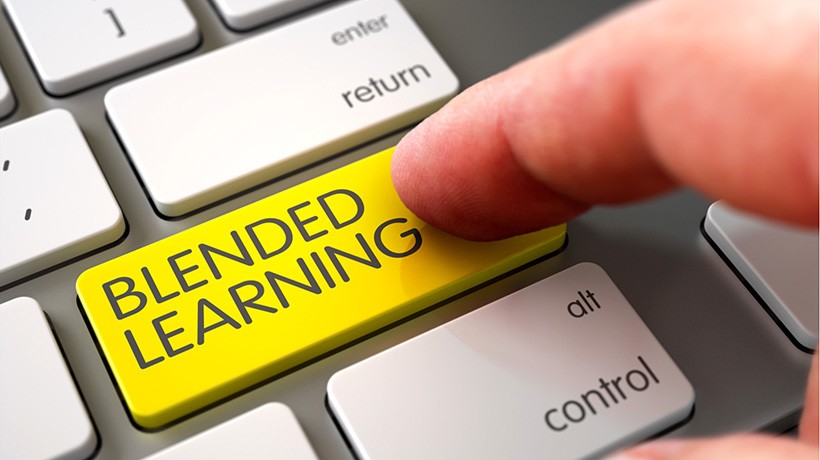How To Build Blended Learning Experiences That Deliver
Blended learning has become an industry favourite term, attached to all manner of training approaches. Some represent truly blended approaches with a focus on effective delivery, maximum engagement, and long-term efficiency. In contrast, others seem to attach a few pre/post digital pieces and call it a blended approach, which sounds great, but it doesn’t really do much for the learner. Here are my top tips to create blended learning experiences that deliver for your business and your learner.
1. The Efficiency Myth
As with all digital learning, effective blended experiences offer long term efficiency but conversely take much longer to design and develop than traditional workshop-driven interventions. I’ve seen many examples of businesses try to flip this by simply throwing some rapid deployment content in front of and following a workshop. This approach would seem to offer short- and long-term efficiency, and it certainly offers speed but loses all the benefits of a blended approach.
If your content is dull, rapid deployment pages with a few images your learners won’t be any more engaged than they would normally be. If your after-work piece is just as dull it simply won’t get done, people are busy and if you want them to invest in you and your message, you need to invest in the way it’s delivered. Don’t take the quick route, blended experiences should take time to create, their value isn’t in rapid deployment, it’s in long term stability, reliability, and consistency.
2. Let Learners Find Their Way
Self-driven learning is little like a unicorn in the L&D world, especially when businesses often want training turned around within a set period. Obviously, some form of time limitation will always exist, but if you can create an environment where your learners can interact with your content in whatever way suits them, you’ll quickly see engagement and retention improve.
I always liken this to the open university approach. You provide a roadmap and resources in a variety of formats and let your learners find their way using these tools to the end goal. Not only does this lessen the load on your L&D team, but also promotes learners doing what works for them and their development.
Once again this requires time be spent on creating a mass of digital content in multiple formats, from SCORM to video and podcasts, infographics and reference guides, but it also allows for the facilitators to get out of the classroom and instead run drop-in sessions, support groups and discussion forums with the learners taking an active role.
3. Market Your Experience
The world of marketing has been selling us things we never knew we wanted for years. Your learners will never say, “I really want an engaging blended learning experience that adapts to my way of working and learning and promotes personal as well as professional development”, but that doesn’t mean you shouldn’t give it to them. Research your audience, hold focus groups and send out surveys and use that data to create your masterpiece. Then, market your product to your learners.
This is an area L&D needs to work on as a whole. Don’t email an invite to your leaners a month before and add it to their outlook calendar. Don’t attach the word mandatory learning module and don’t tell them they just have to get through it. Create a buzz around your new offering and engage your audience before the delivery even begins. Utilise video to create adverts and social media awareness, record podcasts with business leaders linking your program to key business priorities and, when you start getting amazing learner feedback, share them with the business. Get people as excited about your new learning experience like the launch of a new iPhone, be the Steve Jobs of your L&D department.
4. Quality
Ultimately, this is the single biggest thing, the quality of the content you produce is what makes the difference. If you market your experience, allow learners to work in their own way and don’t rush the design and development, but offer dull, stock image-driven content, it’s all been a waste of time. Bring your content to life with storytelling, use exciting, new and bespoke graphics and interactions to grab your learners and leave them wanting more. Give your learners ways of interacting with each other and reflecting on their learning and give them an environment that makes learning the single most important thing. Whether it’s a learning lounge, a chill-out zone or a mix of spaces, let them explore the space as they explore your content.
Don’t compromise on the quality of anything, fight for your learners to have the best, investing in your program will be seen, by the learner, as an investment in them and they’ll return that investment in effort.
5. Bringing It All Together
In short, creating truly effective blended learning experiences takes time, effort, money, creativity and a lot of research. If you’re not in a position or are unwilling to do these things, stay away, what you’re creating isn’t blended learning, it’s a workshop with a few digital bits thrown in. That’s not to say you have to build the arc on your first attempt. Why not try creating small blended learning experiences first? This allows you to explore creating an effective program with limited time and finances.
No matter what you do, don’t do half a job. Don’t compromise quality for speed, your learners might say it’s the best learning they’ve ever seen, but what are they comparing it to? Creating world-class learning experiences means stepping beyond what’s new to your people and offering them something extraordinary, something they not only haven’t seen before but won’t see anywhere else.

